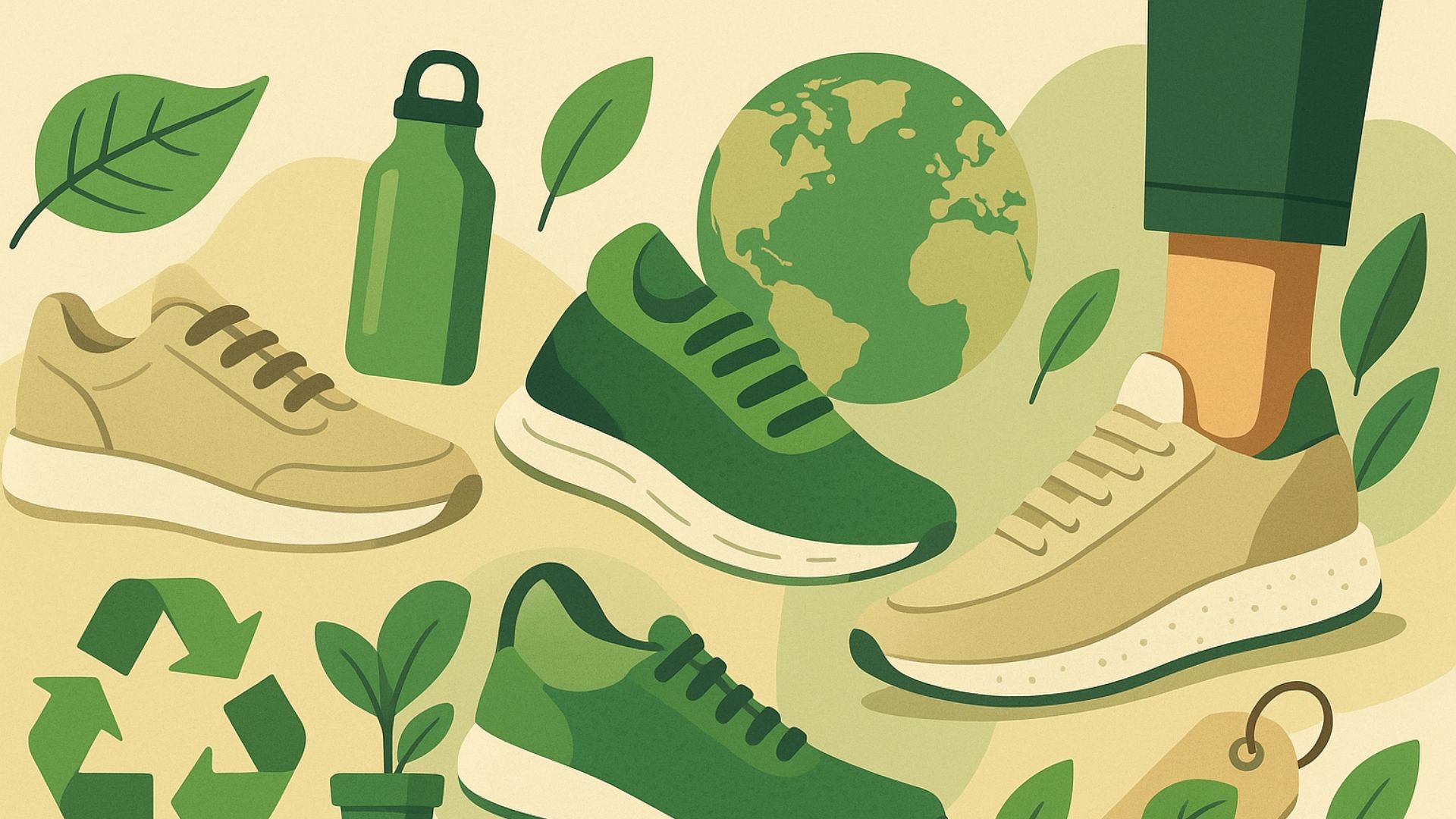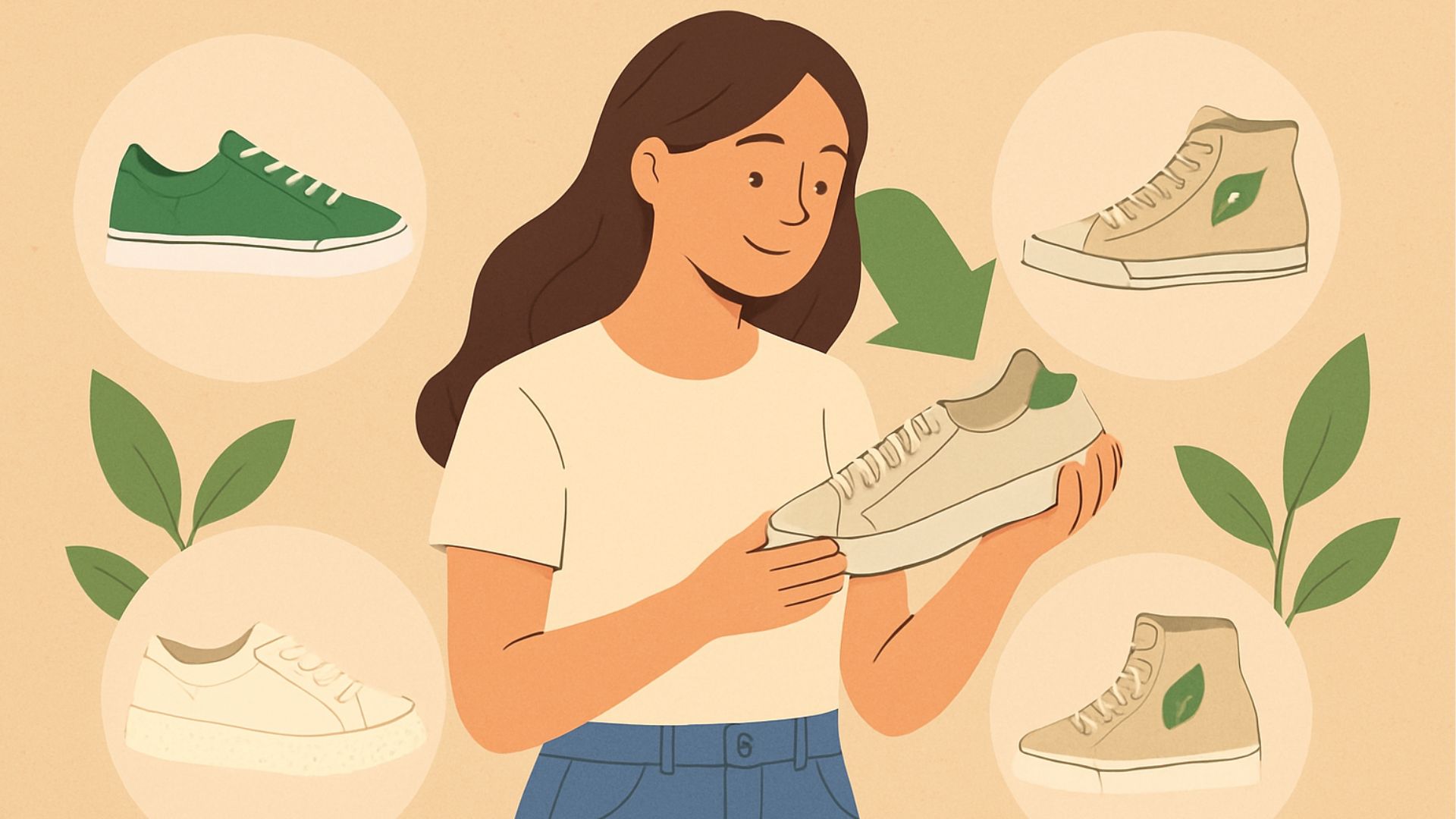What are the most sustainable sneakers?
If you’re young and outgoing, chances are you want to exude a sense of coolness among your peers. However, the definition of ‘cool’ has evolved, with a growing emphasis on ethical consumerism and environmental consciousness in our purchasing decisions.
While this shift may not apply to everyone, millennials and Gen Zers, particularly the latter, are increasingly concerned about the sustainability agendas of major brands like New Balance, Nike, and Adidas.
The numbers they tout regarding sustainability initiatives serve both as a marketing strategy and an attempt at transparency.
However, while being environmentally conscious is commendable, it's essential to consider the entire carbon footprint associated with manufacturing sustainable sneakers, including factors like transportation.
Nevertheless, the desire to make a positive impact through mindful purchasing decisions is a step in the right direction.
In this article, we delve into the social significance of sustainable sneakers and their environmental impact, followed by a curated list of main brand recommendations that align with both style and sustainability. Read along!
Sneaker culture has always appreciated the meticulous craftsmanship that goes into each pair. This appreciation aligns with the notion of consciousness, including environmental concerns.
As we step into the global sneaker market, we are greeted by its staggering magnitude, valued at a whopping $79 billion in 2020.
Projections paint a picture of exponential growth, with estimations soaring to $120 billion by 2026. Yet, amidst this colossal industry, a sobering reality surfaces—the environmental toll of sneaker production.
Annually, a staggering 23 billion pairs of shoes are manufactured, with an alarming 22 billion pairs meeting their end in landfills.
This wasteful narrative underscores an urgent need for sustainable practices within the industry.
Sustainable Fashion Brands: Leveling Up Strategies
Thankfully, major brands like Nike, Allbirds, Adidas and New Balance are stepping up to the plate, spearheading sustainability initiatives to combat environmental degradation.
Nike, with its ambitious vision of achieving "zero waste, period", embraces recycled materials and smarter production methods.
Similarly, Adidas sets its sights on replacing virgin polyester with recycled alternatives by 2024, aiming to infuse sustainability into nine out of ten clothing items by 2025.
However, amidst these commendable efforts, the shadow of greenwashing looms large.
Instances where brands make exaggerated or misleading claims about their environmental practices continue to cast doubt on the industry's commitment to sustainability.
For example, Adidas faced scrutiny over its ocean plastic range, with only a fraction of the shoe's upper portion being made from recycled plastic.
Consumer behavior within the sneaker culture plays a pivotal role in shaping market trends, driven by celebrity collaborations and the allure of limited edition releases.
Footwear emerges as the streetwear product of choice for 62% of respondents in a survey, underscoring the influence of this culture on consumer preferences.
The promotion of ‘repair, reuse, and recycle’ is often put forth.
Here’s an article on where to recycle shoes.
These initiatives are crucial for breathing new life into old shoes, steering them away from landfills and towards a circular economy within the sneaker industry.
Eco Sneakers: Embracing ethical consumerism
As we move towards ethical consumerism, we are reminded of the responsibility that lies in our purchasing decisions.
As consumers, making informed choices and supporting brands that prioritize sustainability can drive positive change and contribute to a more environmentally conscious future for the fashion and footwear industry.
Beyond style and comfort, our sneakers carry the weight of environmental impact and ethical considerations.
As consumers, we wield the power to demand transparency and substantive action from brands, steering the industry towards a more sustainable future—one step at a time.
The production of sustainable footwear represents just one facet of a broader agenda (including clothing) embraced by leading brands, signaling a commitment to heightened transparency regarding the carbon footprint of their products.
Yet, it transcends mere environmental considerations; it's equally about ethical manufacturing practices and the holistic approach to product creation.
When it comes to shoes, it is important to consider not only transportation but also the entire lifecycle of production.
Across the board, major players like New Balance, Nike, Adidas, and Allbirds share a common vision, albeit with nuanced distinctions.
Their collective commitment underscores a unified pursuit of sustainability, blending environmental stewardship with ethical production principles to shape a more conscientious future for the footwear industry.
New Balance Sustainability Agenda
New Balance's sustainability strategy aims to achieve key goals by 2030:
- Environmentally Preferred Materials: Source 100% preferred leather and 50% recycled polyester by 2025 to reduce climate impact.
- Renewable Electricity: Use 100% renewable electricity for owned operations by 2025.
- Hazardous Chemicals Elimination: Eliminate hazardous chemicals from operations by 2025.
- Zero Waste to Landfill: Achieve zero waste to landfill in footwear factories by 2025.
- Emissions Reduction: Cut emissions in half by 2030, aligning with climate science targets.
- Worker Well-being and Development: Invest in workforce training and education programs by 2025.
- Transparency and Accountability: Publish targeted supply chain wage data by 2023 for fair compensation.
New Balance is committed to sustainability, focusing on environmental stewardship, social responsibility, and quality design for a more sustainable future.
New Balance’s Green Leaf Standard
New Balance's Green Leaf Standard, integrated into its popular 574 and Fresh Foam 1080v12 footwear lines, signifies a significant sustainability push. These models feature environmentally-preferred materials, including recycled polyester and preferred leather, aligning with the brand's goal of sourcing 50% recycled polyester and 100% preferred leather by 2025.
The visible leaf icon on the website distinguishes Green Leaf Collection products, ensuring transparency for consumers.
With prices ranging from $65 to $160, these sustainable options are accessible to a wide audience, making eco-conscious choices practical and stylish.
Overall, New Balance's Green Leaf Collection reflects its commitment to responsible manufacturing and environmental stewardship without compromising on performance or aesthetics.
Allbirds’ Sustainability Strategy
Allbirds' sustainability strategy revolves around three key pillars:
- Reducing raw materials usage
- Sourcing 75% of materials sustainably
- Cutting carbon intensity by 25% by 2025.
They prioritize using natural and recycled materials to combat the negative environmental impacts of synthetic materials, which are derived from fossil fuels and contribute to climate change.
Allbirds innovates by creating alternatives like SweetFoam® and Plant Leather, as well as incorporating recycled synthetics to enhance durability where needed.
Options are great for both men and women such as the now almost trademark Allbirds Wool Runners Sneakers. The latter are great sustainable womens sneakers.
Additionally, they focus on extending product lifetimes through lean manufacturing, circular economy initiatives, and designing for longevity.
Through these efforts, Allbirds aims to minimize their carbon footprint, promote transparency, and lead the fashion industry towards more sustainable practices.
Allbirds is quite transparent in providing a comprehensive methodology on the carbon footprint of its products.
For brands' sustainability ratings, we highly recommend consulting 'Good On You'.
According to their assessment, while Allbirds has commendable policies to reduce greenhouse gas emissions in its supply chain, it falls short in ensuring the payment of a living wage for its workers.
Nike’s Sustainability Strategy
When you use the Nike shop to shop for shoes, you’ll realise they have a sustainability policy, but also more specifically for shoes where they indicate the number of models that have at least 20% sustainable material.
In 2022, Nike introduced two new pairs of shoes designed to be taken apart and recycled, marking a significant step towards circularity in product design. The Nike ISPA Link shoe, available in June, features interlocking modules that can be disassembled for recycling or donation at Nike stores.
The Nike ISPA Link Axis, which arrived in early 2023, builds upon this concept with a 100% recycled polyester upper and 100% recycled TPU tooling.
Nike emphasizes the need to scale these innovations to make a real impact and highlights the shift towards circularity in footwear design. Traditional shoe construction methods often involve glue, making disassembly for recycling challenging.
By creating shoes that can be easily taken apart, Nike aims to reduce the carbon footprint of its products and open up new possibilities for their life cycle.
These initiatives align with Nike's broader commitment to embrace circular design principles outlined in its Circular Design Guide.
Addidas Sustainability Roadmap
Adidas is stepping up its sustainability game with a clear roadmap and ambitious targets for 2025 and beyond.
They're aiming for nine out of ten Adidas products to be sustainable by 2025, reducing greenhouse gas emissions per product by 15%, and achieving climate neutrality across their entire value chain by 2050.
But it's not just about the environment. Adidas is also committed to fair wages, gender equality, and ensuring a safe working environment throughout their supply chain. By 2025, they aim to have systems in place to identify and manage high-risk human rights issues in 100% of their value chain.
To make this happen, Adidas is teaming up with suppliers, investing in innovative materials and technologies, and empowering their employees to become sustainability ambassadors.
With a focus on both environmental and social impacts, Adidas is proving that sustainability isn't just a buzzword – it's the future of business.
For the environmentally savvy shopper, their website provides more detail
For eco-conscious consumers, their website offers detailed information on products crafted with recycled materials:
1. Primeblue: Utilizing recycled material sourced from Parley Ocean Plastic.
2. Primegreen: Featuring a range of high-performance recycled materials.
3. Vegan: Providing animal-free alternatives.
4. Better Cotton Initiative: Collaborating for more sustainable cotton farming practices.
5. More recycled materials: Prioritizing the elimination of virgin materials.
In life as in shopping, things aren't always what they seem.
When it comes to shoes, it is important to consider not only transportation but also the entire lifecycle of production.
This lifecycle includes "raw material extraction, processing, manufacturing, assembly, packaging production, transport, and ultimately, disposal" (Milà et al., 1998).
In conclusion, the discussion surrounding sustainable footwear with materials like recycled polyester underscores the growing importance of ethical consumerism and environmental consciousness in the fashion industry. The question has been posed from consumers to shoe brands, and that is already a significant step in the right direction.
Brands like Allbirds, New Balance, Nike and Adidas have made significant strides in adopting sustainable practices, from incorporating recycled materials into their products to reducing waste and minimizing their environmental impact.
However, there are still concerns and debates surrounding the sustainability of certain materials and manufacturing processes, emphasizing the need for continued efforts towards transparency, innovation, and accountability within the industry.
As consumers, making informed choices and supporting brands that prioritize sustainability can drive positive change and contribute to a more environmentally conscious future for the fashion and footwear industry. So, next time you purchase a shoe, fulfill your duty as a responsible citizen by seeking to understand the marketing process and the materials used in its manufacture!
You May Also Like
What Is RWS Wool?
Most Energy Efficient TVs in 2024: A Comprehensive Overview
Off Grid Homes: The Ins And Outs
- How Sustainable Is Recycled Polyester?
- Shoe Waste: How Consumption Became Culture
- Where & How To Recycle, Resell, or Repair Your Old Shoes
- Milà i Canals, L., Rieradevall, J., Domènech, X., & Fullana-i-Palmer, P. (1998). Application of life cycle assessment to footwear. The International Journal of Life Cycle Assessment, July. https://doi.org/10.1007/BF02977570"




















